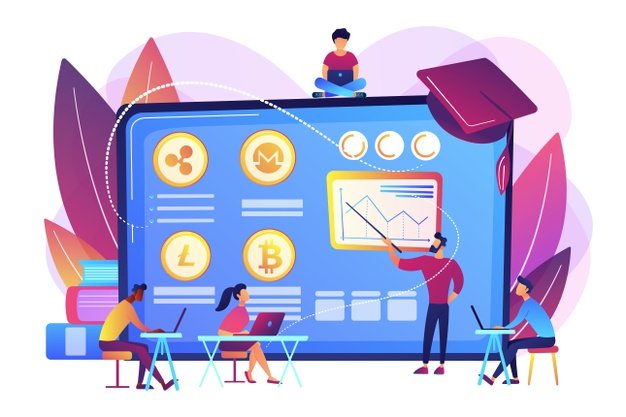The world of today is more connected than we could ever imagine. It also uses technologies in new and innovative ways.
One of the perks of new technologies can be seen in various eLearning platforms and the teaching, learning, and coaching opportunities.
This article will introduce you to all of these concepts and show you the many advantages of an integrated learning platform.
What’s what
eLearning-
refers to learning which uses electronic technologies to access the educational extra curriculum activities apart from the orthodox classroom culture. In most cases, it refers to a course, program, or degree delivered entirely online. It is also interactive, meaning you can also communicate with your teachers, professors, or other students in your class.
LMS-
LMS is a short form of the Learning Management System. It refers to one of the ways to do training online. The LMS works by heaving the assets uploaded to the teaching and learning System, making them easily accessible for remote learners. In some cases, the study process might have built-in eLearning authoring tools that will allow you to develop online teaching and training materials. You can do it even without any interference from third-party software.
Integrated Training Platform –
more than an LMS, an integrated training platform focuses on interactivity. It also pays greater attention to each individual that is using it to learn new things. It also has some additional benefits, such as event management and more. Here’s what the integrated training platform has to offer:
1. ITP can save you from duplicate data entry
Blending your training management platform’s booking system of an online course with your website means all the displayed data on your website is the same information you enter into your training management program.
This means you don’t have to enter your data twice, which will save you loads of time. Centralized scheduling and document management will, in return, increase the efficiency of your training operations.
2. Better learners’ engagement
Students who use ITPs are more involved in their training and accomplish more knowledge in a shorter time. This platform also allows the managers and instructors to observe their apprentice’s regular progress and give almost instant feedback. This method is helping them to understand the subject matter thoroughly.
Therefore, apprentices can watch their day to day improvement in real-time as they complete their tasks, increasing their engagement and personal recognition. At the same time, supervisors can observe the individual progression of each apprentice. And can offer their support to any learners that need it.
3. All the info is automatically kept up to date
Because all your information is being pulled from one central place, you don’t need to worry about your website’s information is different from what you’ve entered into your training management policy.
It also means if you notice a mistake in any of your data, there is only one place you have to go to fix it, and you can be confident that it will be updated across all the other locations where the information appears.
Likewise, you don’t need to worry about remembering to update and make changes to your website’s information. It will always be updated in real-time from your training management platform, so you can always be sure that everything is up-to-date.
4. Greater convenience for the users
As you have seen above, Learning management system platforms try to offer many resources to their users, but the overall experience can sometimes be too chaotic and overwhelming.
In contrast, an integrated training platform consolidates disparate learning resources into a single portal.
This form of learning also assists employees in track down learning opportunities, furnish ways to enhance them, and manages their preparations. It also facilitates and encourages partnership and knowledge sharing between users, making the whole experience more interactive and more immersive than ever before.
5. It’s an open platform that many people can contribute to
Another big difference between LMSs and this newer system is that while the LMS is a close source solution system where only administrators can attach content, training platforms tend to be open. This makes it much easier to generate an assorted array of choices and learning paths.
Employees, managers, and subject matter specialists can freely submit content and recommendation proposal. Thanks to this option, the selection for each learner quickly becomes enormous and diverse.
6. Different aim compared to LMSs
Organizations that rely on LMSs as a way of teaching tend to use similar forms for each course. That is, they present the users with a block of information followed by a brief quiz.
Consequently, many employees grasp the LMS as a task rather than a way to learn new trades and gain valuable knowledge. One more consequence of this routine is that employees will most likely not worry about contracting with non-mandatory content.
The integrated training platforms of today are outlined to influence and the growth of the business positively. When employees spend more time gaining knowledge, they become more valuable assets and contribute to their companies more. This gives the companies a clear advantage over the opponents on the market by making them more ambitious.
7. Fast updates
With new trends, laws, and information emerging nearly daily, an organization’s learning requirements can transform from day today. The training policies take this into account. They’re vibrant, unlike the static interfaces of LMSs. The learning experience platforms allow professions to start teaching any new emerging skills without delay.
Updating an LMS is a task that can take months. By the time the project is complete, the skills and knowledge the company wanted to offer via an LMS might no longer be relevant to the business.
Conclusion
If you are looking for talent in a versatile field, the all-in-one solution is a smart process of electronic learning; you can’t go wrong with an integrated training platform. They have many advantages over the outdated and clunky completion such as an LMS, including quick and easy updates and higher employee engagement. More engagement brings faster learning and greater user satisfaction.
Due to their interactive and immersive nature, these platforms make it easier to keep track of every individual user and provide instant personalized feedback. Simultaneously, since they are efficiently centralized, they can save you time on manual tasks such as data entry while simultaneously helping you ensure that all the relevant info is up to date.
Read Also:































